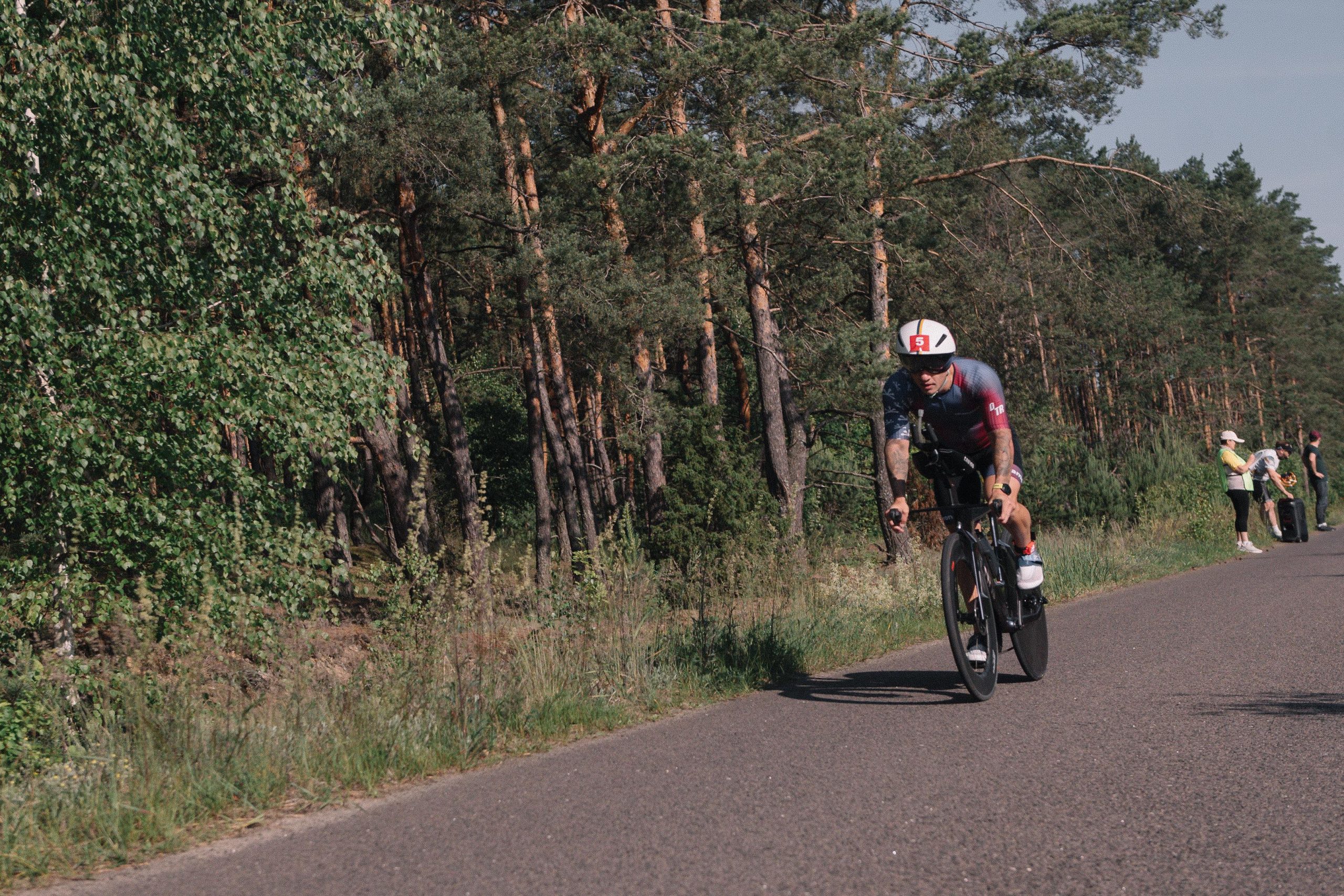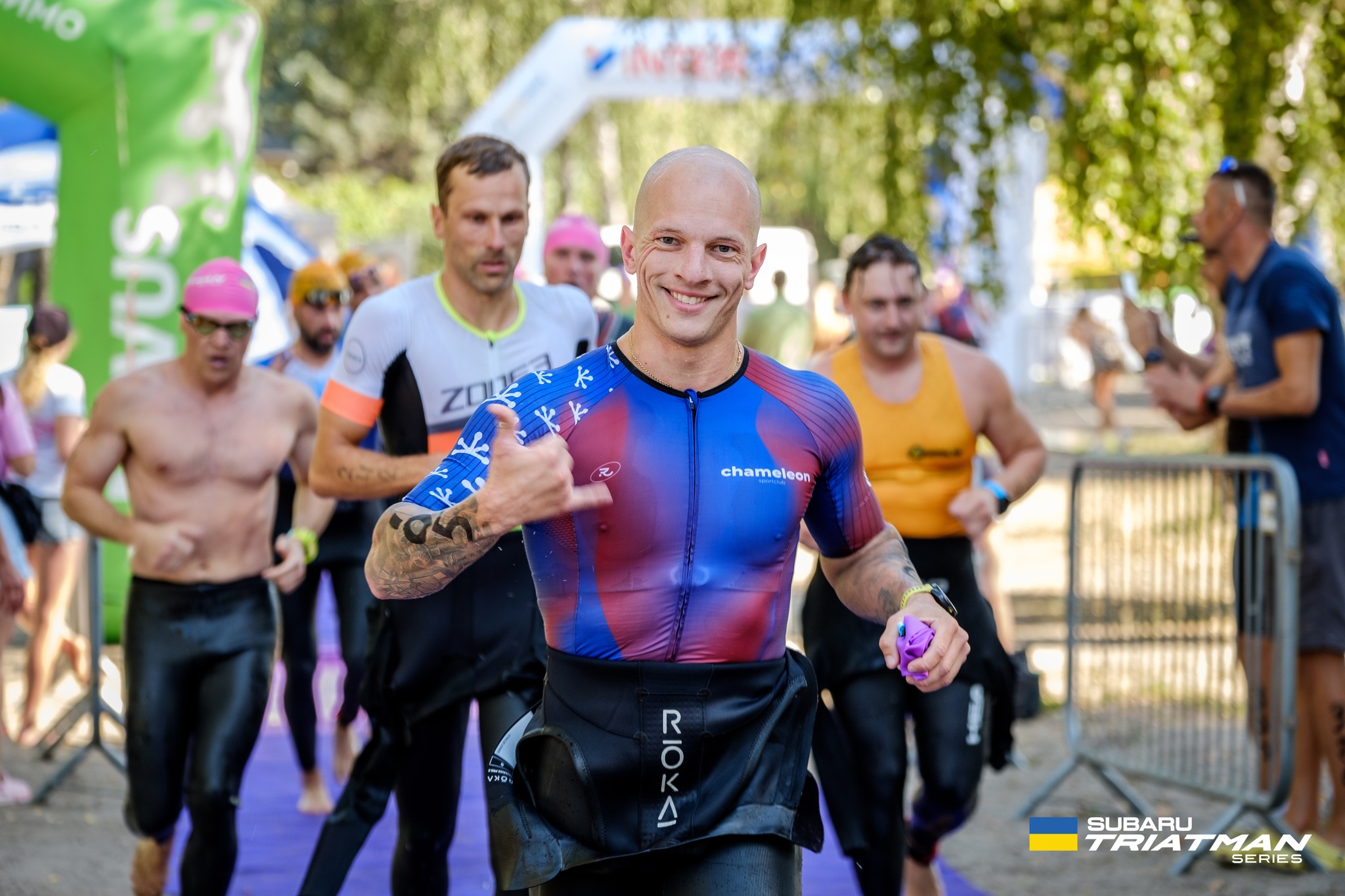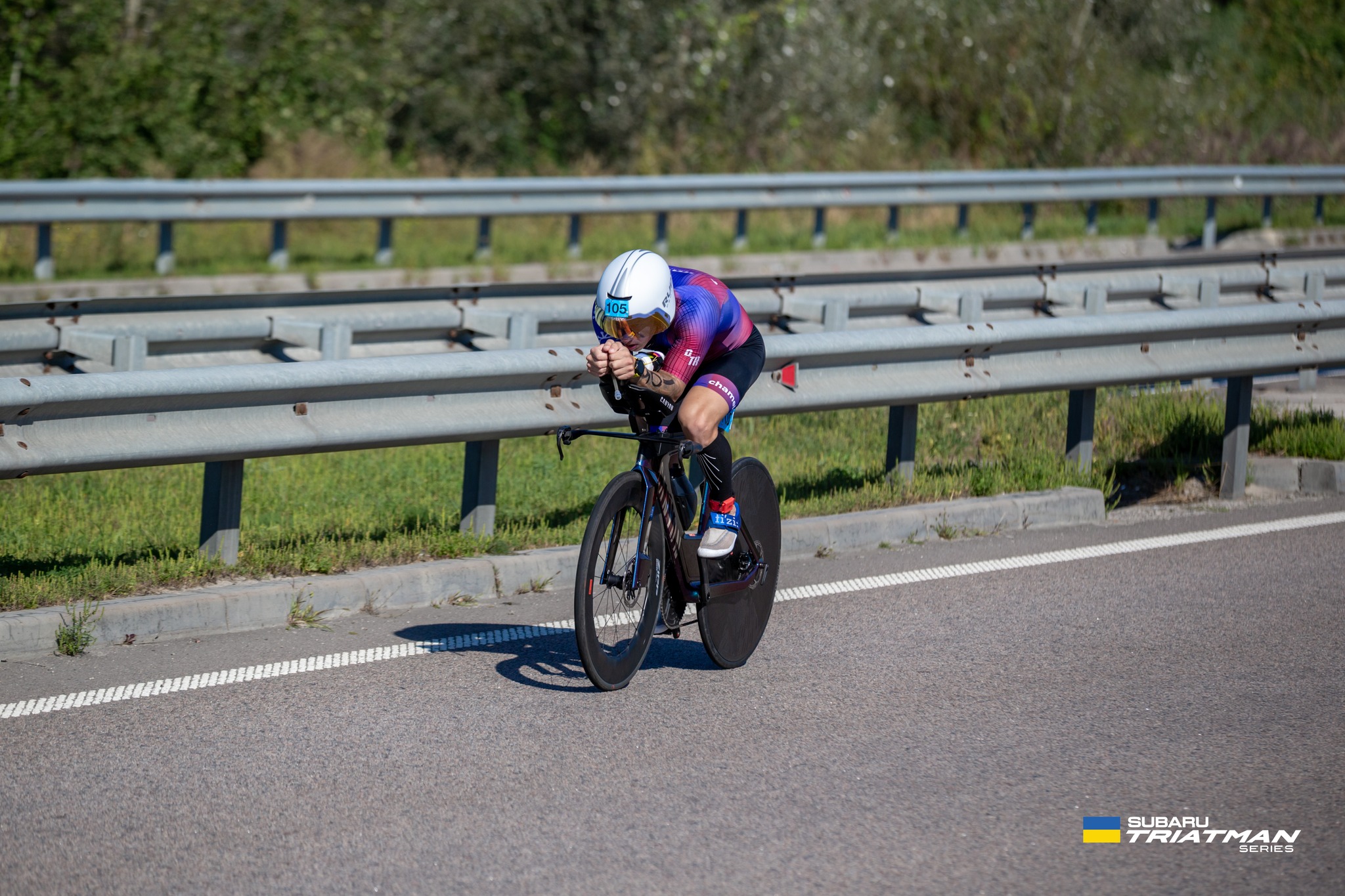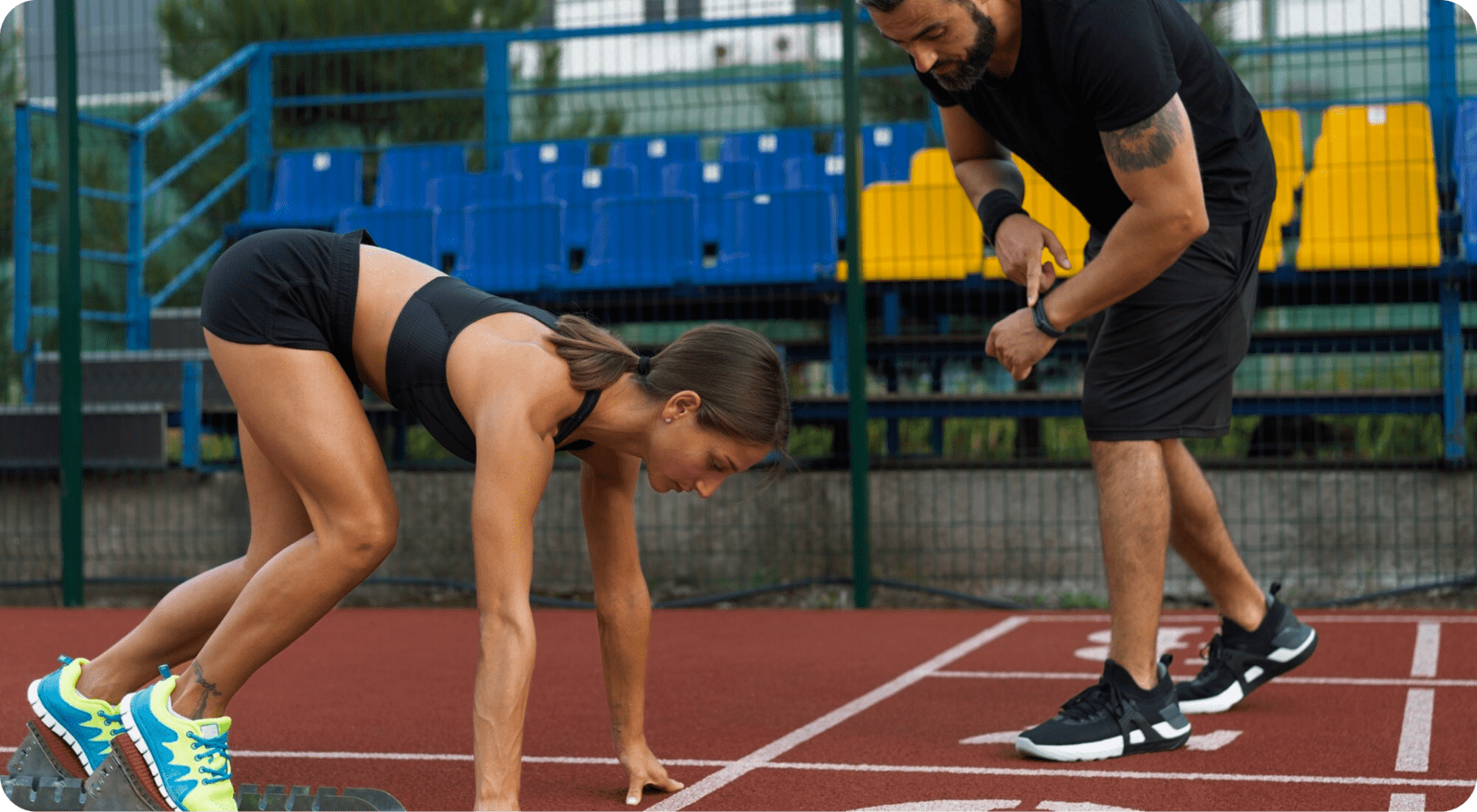“Metabolic testing” might sound like one of the complex triathlon training terms, but it doesn’t always mean lab coats and fancy equipment. While lab tests give the most precise data, you can still learn a lot about your physical performance with a simple field test, a stopwatch, and a heart rate monitor or power meter.
The goal of metabolic testing is to understand how your body fuels itself, when it burns fat, when it switches to carbs, and how to train those systems better. Here, we dive deeper into metabolic testing for triathletes, covering types of tests, how to use the results, and some common misconceptions about it.
Types of Metabolic Testing
Metabolic testing evaluates how your body processes energy and can provide insights into your metabolism, fitness level, and overall health. Here are the main types of metabolic testing:
1. Resting Metabolic Rate (RMR) Test
RMR test measures calories burned at complete rest, basically, the energy you need just to stay alive. It is used for weight management, nutrition planning, and metabolic health assessment.
RMR is typically done via indirect calorimetry (analyzing oxygen consumption and CO2 production). You’ll usually lie down and breathe into a device for 10–15 minutes. It’s non-invasive and pretty relaxing.
RMR testing:
- Helps you understand your daily calorie needs for weight loss or weight gain.
- Useful for planning nutrition, especially during heavy training or recovery.
- Can also help avoid underfueling or overfueling, both of which hurt performance.
2. VO₂ Max Test (Cardiopulmonary Exercise Test, CPET)
This test assesses maximum oxygen uptake during intense exercise. It determines cardiovascular fitness and endurance capacity. It’s a classic measure of aerobic fitness.
Usually, you’ll wear a mask while running or cycling. The intensity ramps up every few minutes until you reach exhaustion. The mask measures how much oxygen you’re using.
VO2 Max testing:
- Gives you a clear picture of your endurance potential.
- Helps set training zones (especially for cycling and running).
- Lets you track fitness gains over time.
Check out our VO2 Max calculator.
3. Lactate Threshold Test
The lactate threshold test measures the point at which lactate builds up in the blood during exercise. This test finds the point at which your body starts accumulating lactate (a byproduct of hard effort) faster than it can clear it.
You’ll do a series of increasing effort intervals (on a treadmill or bike). At each stage, a small blood sample (usually from your finger or ear) is taken to measure lactate levels.
This test:
- Helps identify the right pace or intensity for sustained efforts.
- Critical for long-course pacing (e.g. Ironman bike leg).
- Allows smarter interval training and race strategy.
4. Substrate Utilization (Fat vs. Carb Burning) Test
The substrate utilization test analyzes whether the body burns more fat or carbohydrates at different exercise intensities. This test tells you what fuel your body prefers at different intensities: fat or carbohydrates.
Usually done alongside a VO2 test. The mask collects your breath and analyzes the ratio of oxygen to carbon dioxide, showing what fuel source you’re using at different heart rates or power outputs.
The substrate utilization test:
- Helps plan fueling for long sessions and races.
- Guides low-intensity training for better fat adaptation.
- Supports strategic carb intake before and during events.
5. Blood-Based Metabolic Panels
These aren’t performance tests like VO2 max, but they’re still incredibly valuable for understanding your overall metabolic health. Blood panels give you insight into what’s going on under the hood. All these things affect your energy levels, recovery, and long-term health.
Key panels for triathletes: For additional guides and tips, visit the TriWorldHub Blog.
- Basic Metabolic Panel (BMP):
Checks things like glucose, electrolytes, and kidney function. This helps monitor hydration status and energy availability. - Comprehensive Metabolic Panel (CMP):
Includes everything in the BMP plus markers like liver enzymes and proteins, giving a more detailed picture of how your body is handling stress and recovery. - Lipid Panel:
Measures cholesterol and triglycerides. Important for cardiovascular health—something every endurance athlete should keep an eye on. - Hormonal Tests:
Looks at levels of thyroid hormones, cortisol, insulin, and more. These influence metabolism, energy levels, sleep, and how well you recover from hard training blocks.
6. Bioelectrical Impedance Analysis (BIA)
BIA test estimates body composition (fat, muscle, water), which indirectly relates to metabolic health.
Understanding your body composition gives you indirect but useful insights into your metabolism and performance.
BIA is a quick, non-invasive test (often done on a smart scale) that uses a small electrical current to estimate body composition. It is easy and accessible; however, it can be inconsistent depending on hydration, meal timing, etc.

How to Use the Metabolic Testing Results
Here’s how triathletes can use metabolic testing results to optimize training, nutrition, cycling strategy, and race performance:
1. VO₂ Max Test Results
If VO₂ max is low, focus on base-building (long, easy Zone 2 workouts) to improve endurance.
If VO₂ max is high but performance still lags, work on lactate threshold and efficiency (economy drills in swim/bike/run).
Elite athletes can use VO₂ max intervals (e.g., 4-6 x 3-5 min at 95-100% VO₂ max) to push limits.
2. Lactate Threshold (LT) Results
The lactate threshold test helps you understand how hard you can go before your body shifts from using mostly fat to mostly carbs, and when it starts to fatigue quickly. You’ll get two key numbers from this test: LT1 and LT2.
- LT1 (Aerobic threshold) is the highest intensity you can sustain while still burning mostly fat.
- LT2 (Anaerobic threshold) is the point where lactate builds rapidly (race-pace limit).
How to use it:
- Train just below LT2 (e.g., tempo runs/bikes) to raise your threshold.
- Long workouts at LT1 (Zone 2) to improve fat-burning efficiency.
- Race pacing:
- Ironman → Stay near LT1 on bike, slightly above on run.
- Olympic/Sprint → Push closer to LT2.
3. Substrate Utilization (Fat vs. Carb Burning)
This test identifies your “Fat Max” zone, the intensity where your body burns the most fat. It’s a key tool for long-course triathletes.
How to use it:
- Train at your Fat Max intensity to improve fat adaptation and preserve glycogen.
- Use the data to build a race fueling strategy. If you burn carbs quickly, aim for 60–90g of carbs per hour. If you’re fat-adapted, you might need fewer carbs, but still train your gut to handle fuel.
4. Resting Metabolic Rate (RMR) Results
Your RMR tells you how many calories your body burns at rest. Combine this with your daily training load to create a fueling plan.
How to use it:
- For weight loss: eat ~300–500 kcal below RMR + activity level.
- For weight gain: eat ~300–500 kcal above RMR + activity level.
- If RMR is unusually low, it could signal underfueling, overtraining, or thyroid issues—worth checking with a doctor or dietitian.
5. Body Composition Results
Tests like BIA or DEXA give insight into your lean muscle mass, fat percentage, and potential imbalances.
If body fat is too high, adjust nutrition and add strength training. If muscle imbalances are present, focus on sport-specific strength (e.g., single-leg drills for runners).
Common Misconceptions about Metabolic Testing for Triathletes
Even though metabolic testing is incredibly useful, many triathletes hesitate to try it. Here are a few common myths and the truth behind them:
1. “It’s only for elite athletes.”
Not true. In fact, age-groupers and beginners often benefit the most. Testing helps you train smarter from the start, know your energy expenditure, avoid overtraining, and make the most of limited time.
2. “I can just use online calculators or wearables instead.”
While wearables and apps offer estimates, they’re still based on general formulas. Metabolic efficiency testing gives you real data based on your unique physiology. It’s the difference between guessing and knowing.
3. “One test tells me everything I need to know forever.”
Your physical fitness changes with training, stress, nutrition, and age. Testing is a snapshot, not a lifetime summary. Repeating tests every few months helps track progress and adjust your training accordingly.
4. “It’s just expensive lab stuff.”
While some tests can be pricey, many performance centers now offer affordable options or packages. And compared to the cost of gear, race fees, and coaching, it’s often a smart investment.
5. “I don’t need it if I’m already following a training plan.”
Generic training plans are built for the average person. But you’re not average. Testing helps personalize your training zones, nutrition, and pacing to your specific needs, so you get better results faster.
Why Metabolic Testing Matters for Triathletes
Metabolic testing is a powerful tool for any triathlete who wants to train smarter, race stronger, and avoid common pitfalls like burnout or bonking.
Whether you’re doing a sprint or an Ironman, knowing your exact training zones helps you avoid going too hard too soon. Testing gives you a clear picture of where your limits are and how to stretch them over time.
Metabolic testing shows how your body burns fat and carbs at different intensities. That means you can fuel before, during, and after training based on real data, not guesswork.
If you’re training for half or full Ironman distances, being able to burn fat efficiently can delay fatigue and reduce the need to over-rely on carbs during the race. Testing shows you exactly how well you’re doing this and how to improve.
Looking for the perfect gift for the triathlete in your life? Check out this selection of the best triathlete gifts for ideas and inspiration.






